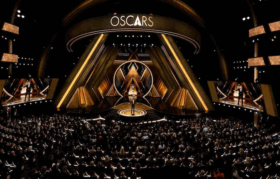
By Dan Larkman, CEO and Founder of Keynes Digital
 Why are so many of today’s leading CTV buyers entering the channel for the first time? Are there specific tools that can create more successful outcomes than others?
Why are so many of today’s leading CTV buyers entering the channel for the first time? Are there specific tools that can create more successful outcomes than others?
The CTV market has seen strong double-digit growth, becoming a must-run channel for brands looking to reach new audiences and engage on a premium screen. While mobile has dominated digital marketing across platforms like Meta and TikTok, CTV provides a one-to-many experience that delivers sight, sound, and motion in a measurable, performance-driven format. Appearing on the TV screen also elevates brand perception, signaling credibility and helping advertisers of all sizes stand alongside major household names.
CTV combines the precision of digital targeting with the scale and quality of television. Brands can target and track campaigns with the same sophistication used across digital channels while gaining the added value of household reach and higher perceived brand equity. This blend of performance and prestige has made CTV one of the fastest-growing channels in marketing.
For agencies, the trend follows client demand. As brands reach saturation across social and search, CTV has emerged as the next major growth driver. Agencies are expanding their offerings to include CTV, recognizing it as an essential component of a modern media mix and a key area for long-term brand and performance growth.
How has the influx of AI tools and tactics impacted success on CTV?
AI is now part of every layer of the CTV ecosystem, from targeting and optimization to creative and media planning. While the term “AI” is often overused, the real breakthroughs come from tools that use large datasets to build smarter audience segments, automate optimizations, and create signal-based targeting with higher accuracy. These technologies enable faster learning cycles and campaign adjustments, improving performance and reducing wasted spend.
On the creative side, AI is lowering the barriers that have historically limited video advertising. Brands can now use AI to test creative variations, edit videos, or generate new assets in minutes, all at a fraction of the traditional cost. This shift allows smaller advertisers to compete at the same visual and storytelling level as large brands.
Has there been any impact on CTV growth as a result of rising M&A activity, fueled by AI creative offerings?
‘The recent wave of mergers and acquisitions in the CTV space reflects the category’s momentum and the growing impact of AI-driven innovation. Larger companies and private equity firms are making strategic bets on technologies that will shape the next phase of CTV, particularly creative tools that merge AI automation with high production quality. These deals show confidence that AI will transform ad creation, delivering broadcast-quality spots in a fraction of the time and cost.
AI creative platforms, while still developing, are already helping smaller brands gain access to premium-quality advertising. As these tools mature, the difference between AI-generated content and traditional TV production will narrow significantly. The result will be a more level playing field and faster CTV growth driven by accessibility, quality, and innovation.







